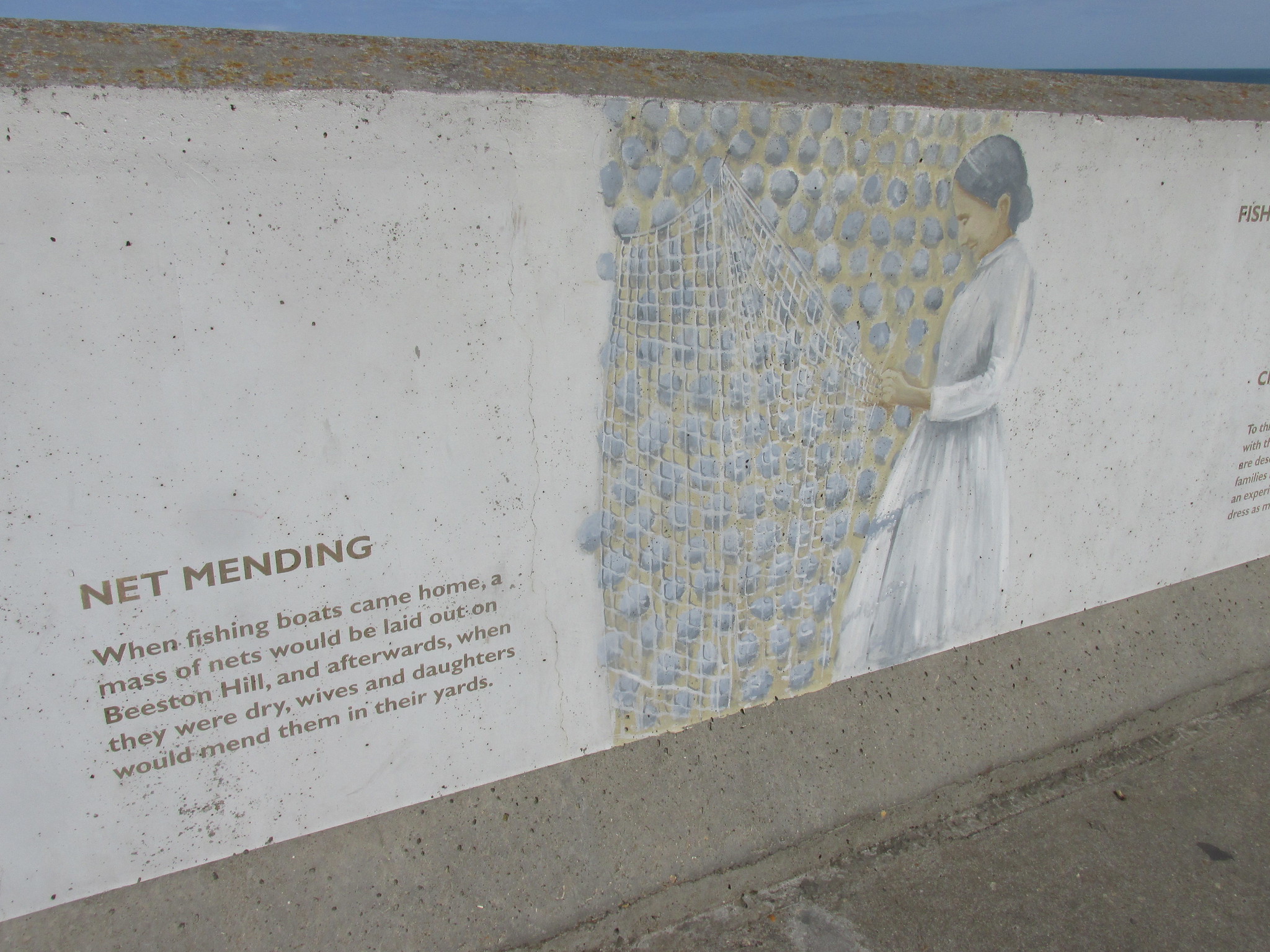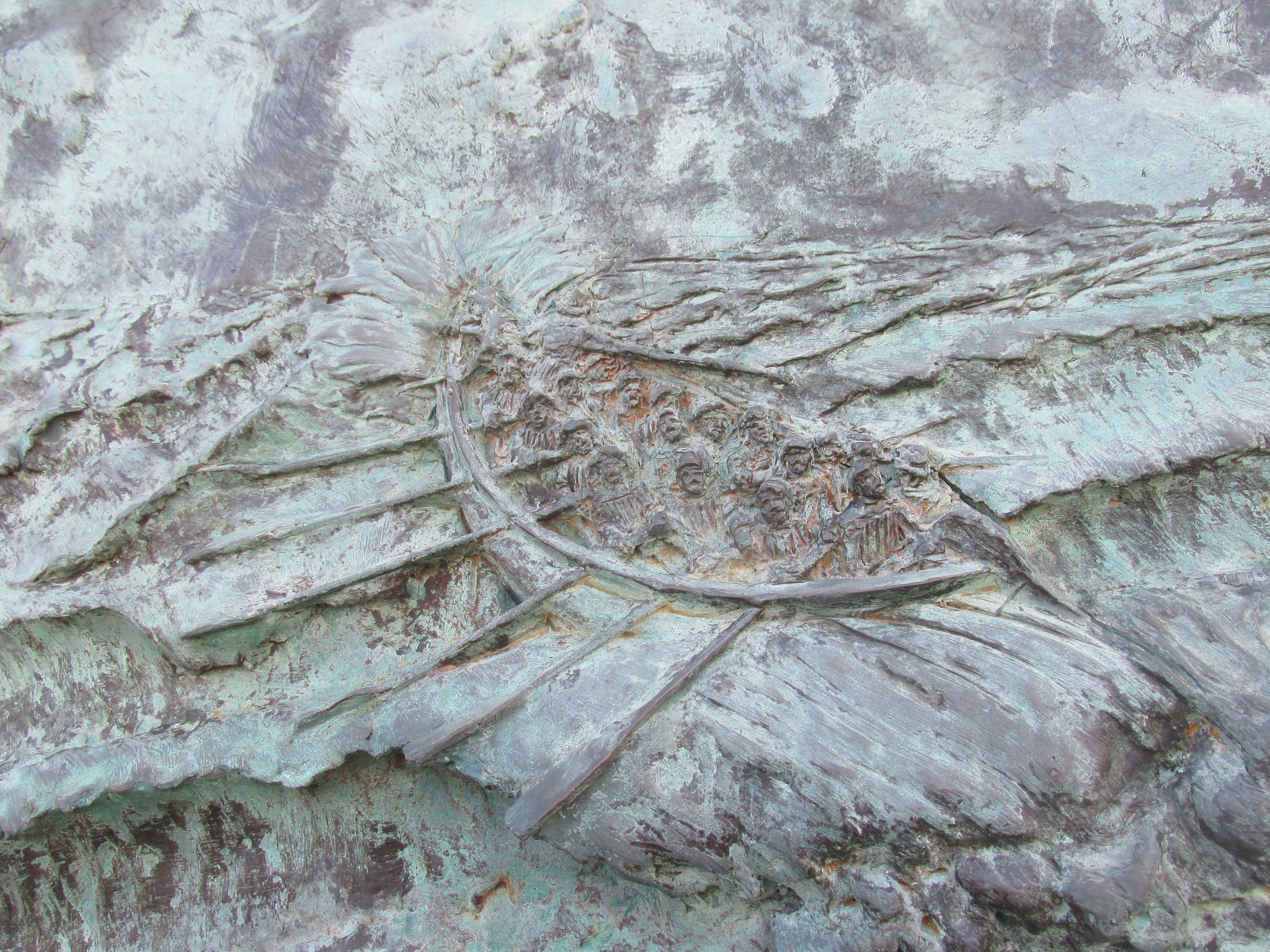On the night of 5 December 2013 sea levels reached even higher than the killer 1953 tidal surge, but this time, thanks to effective sea defences, weather forecasting and communications, no-one died as a direct result of flooding. Of course, flood defences, by their nature, have to be high enough to keep the water at bay, which can result in some huge, blank concrete walls.
 |
| Net mending mural |
In case you can't read the small print on the net mending photo - it explains that when the fishing fleet came home, used nets would be laid out on a nearby hill to dry. Then fishermen's wives and daughters would mend them before the boats put out to sea again.
The top photo is a detail from a bronze depiction of a lifeboat rescue on the night of the 1897 flood tide. Sheringham's first purpose-built lifeboat, the Augusta, was launched in 1838. Back then they were still rowed, of course. The volunteers of the RNLI are very brave men and women!


Great use of sea defences. When we went to Horsey Mill, further SE round the coast, that mill was used to pump away flood water. Seems like the whole Norfolk coast is at risk.
ReplyDeleteThat night in January 1953 must have been so awful - the sea can be both friend and foe can't it?
ReplyDeleteI remember those 1953 floods well (I was fourteen) - so many folk died along the Lincolnshire coast.
ReplyDeleteThat's a really good way of making the sea defences pleasanter to look at, the artwork looks very interesting. The new sea defences on the Lancashire coast near our little bungalow there are really beautiful done in an art deco style with sweeping curves which deflect the power of the waves.
ReplyDeleteWalls are the perfect surface for art! Add some history and some creativity to a boring place. More to see, more to learn!
ReplyDelete